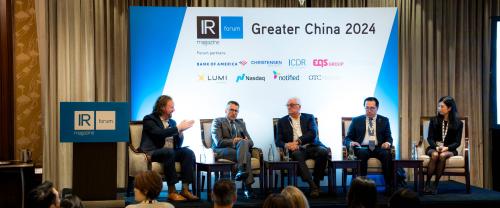Following on from our recent focus on the European IR landscape in 2019, we hear from Marisa Jacobs, senior IR director at Crocs, and Andy Kramer, vice president of IR at NetScout Systems, who give us their perspective from the US.
What’s been your main IR focus in 2018?
Marisa Jacobs: I’m relatively new in a job with a company that is in the middle of a successful turnaround – so a large focus for me this year has been re-establishing credibility with existing sell-side and buy-side contacts, and introducing the company to new buy-side names to acquaint them with our current strategic objectives and our recent successes. I’ve also been designing a completely new IR website, as the existing one leaves a lot to be desired.
Andy Kramer: Consistent with the past couple of years, my focus has been modifying our messages and related IR outreach to address strategic developments and ongoing changes in performance. Our company has been challenged to achieve its financial targets in recent years. This has resulted in the need for IR to be agile and evolve its messaging, and for us to adjust our plans to target existing and prospective institutional shareholders.
What are the main topics on your mind when you think about next year?
AK: For a company that’s fallen short of achieving key performance metrics in two out of the past three years following a large and transformative acquisition, the first topic seared into my brain is tied to our fundamental performance: will we continue to execute on our plans and, if so, how should we further modify our IR efforts? We have gone to great lengths to help investors understand how changing industry trends have impacted our results and the steps we are taking to adapt to those trends and drive better performance.
MJ: For me, it’s the impact of Mifid II – predominantly how its introduction is changing corporate access in ways that may require new approaches to the buy side from IROs.
How do you think the IR landscape in the US will change or develop in 2019?
MJ: My response ties back to Mifid II. I will be planning more outreach directly to the buy side, and am curious to see how the creation of corporate access teams on the buy side continues to evolve.
AK: I think some of the emerging IR trends such as Mifid II and ESG are likely to continue gaining momentum and shaping near-term tactical and longer-term strategic IR plans. Shareholder activism remains a hot-button topic for IR and will continue to weigh heavily on the plans of those companies directly affected by activist campaigns or that perceive themselves increasingly vulnerable to activist campaigns. I also think IROs will continue to benefit from incremental technology innovation to improve workflows, ownership insight and outreach to investors.
What do you feel the main issues will be for IROs in general next year?
MJ: Again, Mifid II, plus the shift in activism giving rise to more involvement from index funds and other passive holders. Also, if the SEC moves forward with the development of rules relating to ESG disclosure, this will lead to significant changes in our disclosure.










